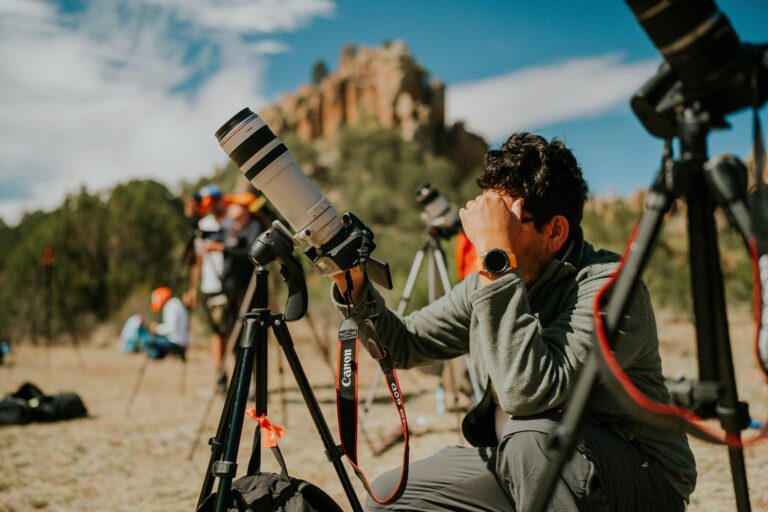Photography has always been a fascinating paradox. On one hand, it captures a single, fleeting moment—a fraction of a second that vanishes as quickly as it appears. On the other, it serves as a timeless record, freezing that moment forever, allowing it to outlive its subjects and be passed down through generations. But which is it? Is photography merely an ephemeral glimpse, a snapshot of something transient? Or does it possess the power to transcend time, transforming ordinary moments into eternal memories? The relationship between photography and time is complex, and while the nature of photography itself is ever-changing, its impact remains undeniable.
Photography and the Fleeting Nature of Moments
Photography, at its core, is about capturing the now—a fleeting second that might otherwise be forgotten. A child’s laughter, a bird taking flight, a wave crashing against the shore—all exist for only a moment before disappearing. The beauty of photography is that it allows us to pause time, but can it really make that moment last? In today’s digital world, millions of photos are taken every minute, only to be forgotten just as quickly. Think about how often we scroll past images on social media. We snap, upload, and move on. Platforms like Instagram and Snapchat thrive on instant gratification, where photos serve a brief purpose before being buried under new content. This raises the question: are we treating photography as disposable? With the rise of smartphones, anyone can be a photographer. We capture thousands of images, often without much thought. Yet, most of these photos never make it beyond a screen. In contrast, older generations would carefully compose shots, develop film, and place prints into albums, giving them a sense of permanence. Have we lost that? Photography’s fleeting nature is part of its charm, though. Not every image is meant to last forever—sometimes, it’s about enjoying a moment in real-time, capturing it, and then letting it fade into the background of our memories.
Photography as an Immortal Record
Despite photography’s association with the temporary, it undeniably holds the ability to immortalize moments. From historic images that define generations to personal snapshots that preserve family legacies, photography transforms fleeting seconds into tangible history. Think of the most iconic photographs in history—The Wright brothers’ first flight, The Beatles crossing Abbey Road, the famous ‘V-J Day in Times Square’ kiss. These images are more than just pictures; they are time capsules, allowing future generations to witness moments they were never present for. Without photography, how many defining moments of history would have been lost? Now, let’s make it personal. How often do we turn to old photographs to reconnect with loved ones who have passed away? A single picture can bring back emotions, memories, and stories that might otherwise fade. Weddings, birthdays, and everyday life are preserved in snapshots, keeping the past alive for future generations. Unlike digital images that risk being deleted or lost in the depths of a hard drive, printed photographs have a tactile permanence. Holding an old black-and-white picture of your grandparents’ wedding is a different experience than scrolling through an album on your phone. While technology has made storage easier, there’s still something to be said about the physicality of a photograph—something tangible that stands the test of time.
The Evolution of Photography and Its Role in Storytelling
Photography has undergone radical transformations over the years, from the invention of the daguerreotype to digital photography and now AI-enhanced imagery. Each advancement has altered how we perceive the role of photography. In the past, having a portrait taken was an event, a rare occasion reserved for special milestones. Today, a selfie can be taken, edited, and shared with the world in mere seconds. Yet, the fundamental essence remains—photography captures something real, even if the way we interact with it has changed. The digital era has introduced new challenges and opportunities for preserving images. With cloud storage, facial recognition, and AI-generated restorations, our ability to keep images safe has never been stronger. However, digital impermanence is a real concern. Hard drives fail, social media accounts disappear, and countless images get lost in the ever-expanding void of data. This brings us back to the importance of intentional preservation. How many of our digital photos will still be accessible in 50 or 100 years? Will future generations stumble upon a dusty hard drive the way we discover old albums in attics today?
The debate between the fleeting and the eternal nature of photography extends to its role in storytelling. News photography captures events as they unfold, bearing witness to history in real-time. Iconic images shape public perception and influence narratives, making them powerful tools of truth and documentation. On the other hand, conceptual and artistic photography allows for reinterpretation, evolving in meaning over time. A photograph taken decades ago may gain new significance in a modern context. This dynamic interplay between the past and present reinforces the idea that photography is never static—it is constantly being revisited, reanalyzed, and reappreciated.
The Duality of Photography: Embracing Both the Instant and the Eternal
So, where does that leave us? The truth is, photography exists in both realms—it’s both a fleeting glimpse and an immortal record. The beauty of photography is that it adapts to our needs, serving different purposes at different times. Casual snapshots serve the moment, feeding our need for instant connection. Carefully composed, printed, and archived photographs tell stories that last beyond a lifetime. With new advancements in AI and digital preservation, the line between temporary and eternal photography is blurring. Technology now allows us to restore old photographs, colorize black-and-white images, and even use AI to generate missing details. This means today’s fleeting moments might be preserved in ways we can’t even imagine. Photography has become a bridge between past and present, a way to keep memories alive, whether in the form of a family album or a photo that pops up on social media memories years later.
Photography doesn’t have to be just a fleeting glimpse or just an immortal record—it can be both, depending on how we choose to use it. It captures emotions, tells stories, and preserves history, while also existing in the moment-to-moment world of social media and digital sharing. The key takeaway? Photography is as permanent or as temporary as we allow it to be. Whether you take photos for the now or for the future, each shot has value. Some moments are meant to be fleeting, while others are destined to last a lifetime. And that’s what makes photography truly magical. It is the art of seeing, feeling, and preserving, a testament to our existence, capturing not just what we look like, but who we are and what we feel. In an instant, a photograph can transport us back in time, yet its presence can endure, ensuring that even the most fleeting moments can live on, immortalized for generations to come.
Keywords for SEO:
- Photography and time
- Fleeting moments in photography
- Eternal impact of photographs
- Digital vs printed photography
- Photography as historical record
- Preserving memories through photography
- Importance of photography in storytelling
- AI and photography preservation
- Instant photography vs timeless photography
- The role of photography in history





